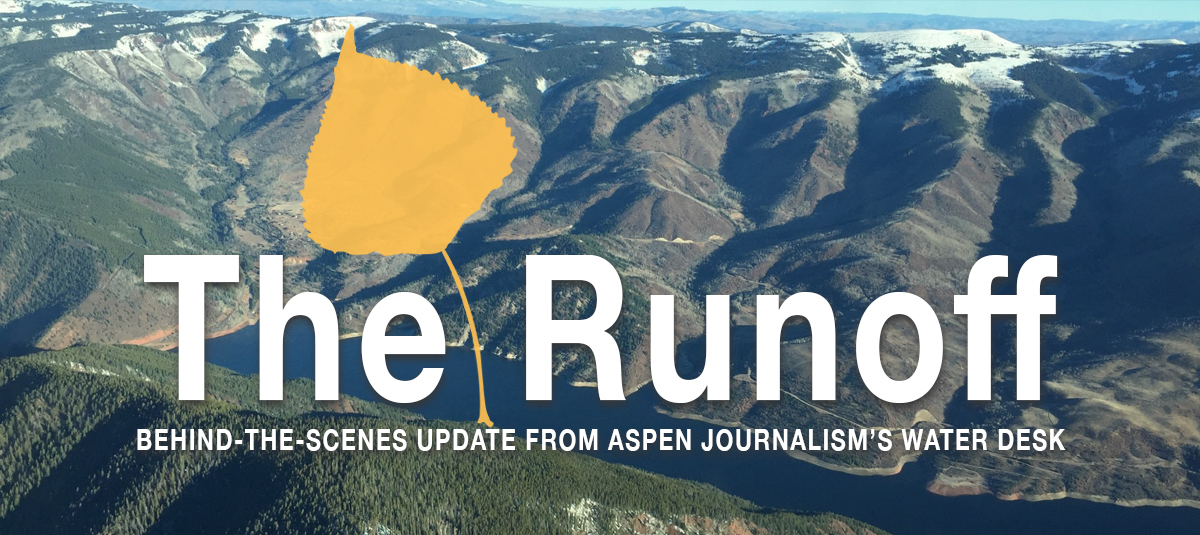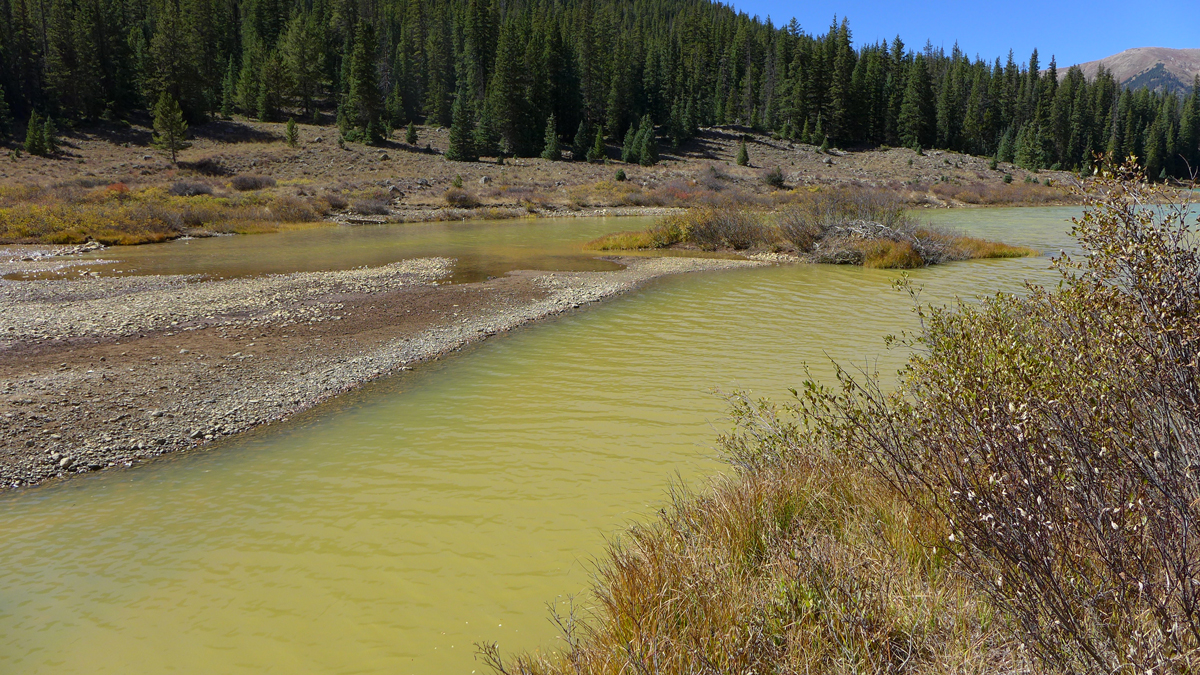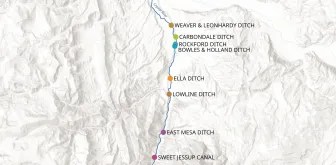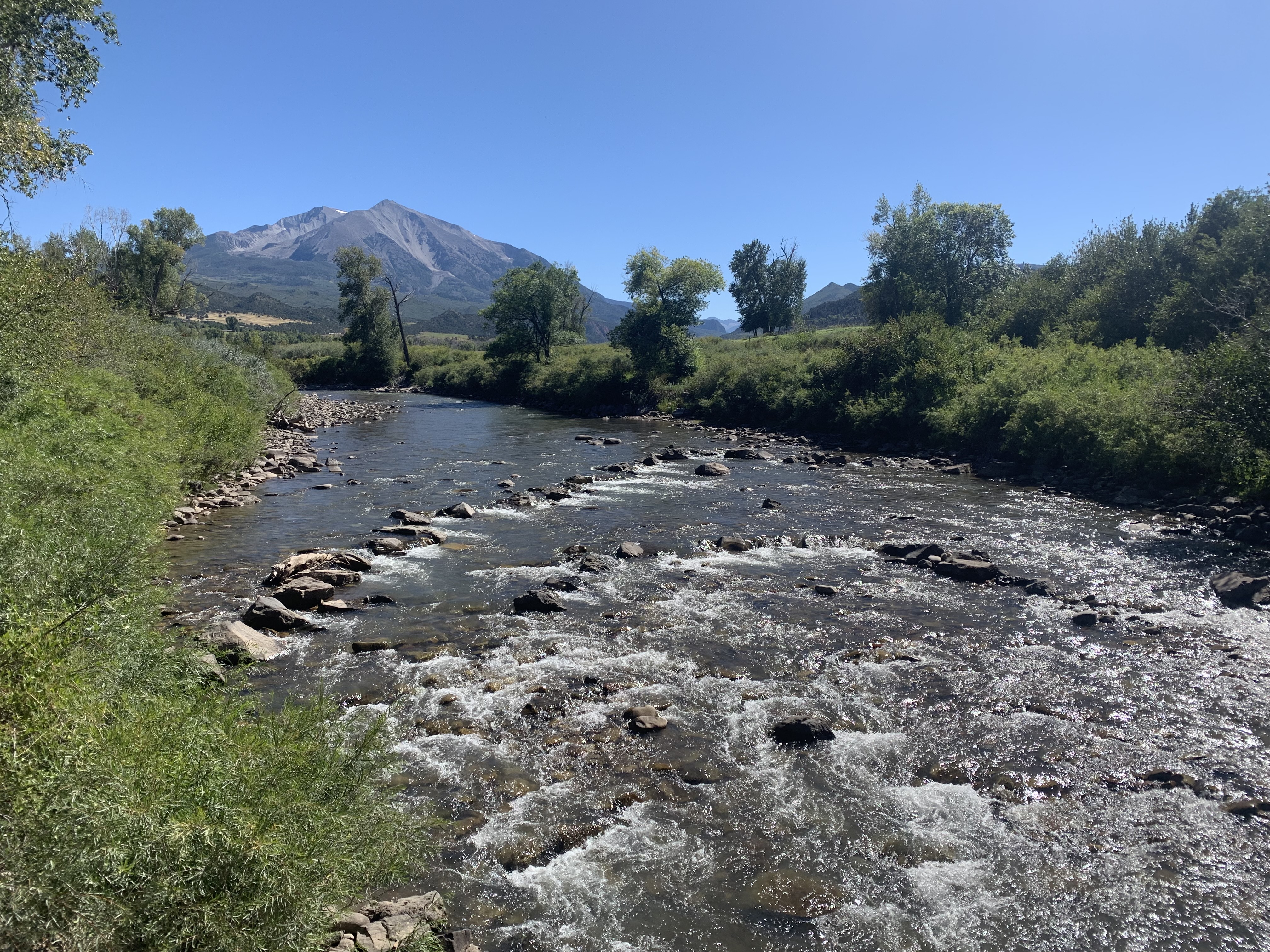
Welcome to the Runoff, where Aspen Journalism’s Water Desk provides insider news and water-related updates you won’t read anywhere else under The Briefing and additional context and updates on the most recent reporting from our water desk under The Recap.
Thanks for going deeper with us and for supporting our nonprofit, in-depth, investigative reporting.
–Heather Sackett
Water Desk Editor and Reporter

New Colorado River water accounting
Journalists and water managers may have to revise one of the most-often-repeated shorthand expressions of how water is used in the Colorado River basin —that nearly 80% of the water is used by agriculture — after a new study by 12 scientists put a finer point on the numbers.
Published at the end of March, “New water accounting reveals why the Colorado River no longer reaches the sea” finds that irrigated agriculture is responsible for just 74% of direct human use and 52% of overall water consumption. Still, water consumed for agriculture remains far and away the biggest water use on the river — about three times all other direct human uses (cities and industry) combined.

These new numbers take into account water use by Mexico and in the Gila River basin — an important tributary for Arizona water users — two areas that were traditionally unaccounted for in previous calculations. Another finding was that 19% of the water goes to evapotranspiration, meaning the water used by plants along riverbanks and wetlands adjacent to the Colorado River and its tributaries. Scientists used the remote sensing platform of OpenET to get these numbers, which break down to 24% in the upper basin and 14% in the lower basin. The fact that riparian areas use nearly one-quarter of the water in the upper basin is an important thing for water managers to know, said the study’s lead author Brian Richter.
“These rivers and the water they carry are immensely important in supporting natural habitat,” Richter said. “It’s important to get that embedded in the water budget so people are thinking about it as one of the ways water gets used.”
Another take-away from the paper is that crops for cattle feed like hay and alfalfa account for 46% of all direct water consumption.
“It’s an excellent piece of scientific work,” said Colorado River expert and author Eric Kuhn. “I think we need to take it seriously that where most of the water goes for is animal feed.”
Healthy Rivers approves Lincoln Creek monitoring grant

Pitkin County and Colorado Parks and Wildlife are working to address high levels of metals — especially aluminum and copper — in Lincoln Creek. The Pitkin County Healthy Rivers board at its April meeting approved a $6,252 funding request from CPW for water quality monitoring equipment for four locations on Lincoln Creek, the Ruby Mine drainage and the mineralized tributary drainage. The grant money will pay for a trail camera and conductivity loggers that measure metals concentrations and temperature every 30 minutes.
A November report by the Environmental Protection Agency found that a section of Lincoln Creek exceeds state water quality standards for aquatic life for aluminum, cadmium, copper, iron, lead, manganese and zinc. Experts attribute the issue mostly to a naturally occurring nearby mineralized tributary that may be leaching more metals into the water due to climate change. Representatives from federal, state and local agencies have been meeting regularly, trying to figure out what can be done to clean it up and this monitoring would be the first step toward that goal.
Maybell diversion project nearly complete

The Nature Conservancy has announced that the project to improve the Maybell irrigation diversion and headgate on the Yampa River is nearly complete, about seven months ahead of schedule and in time for irrigation season. Aspen Journalism covered this story during the summer of 2022. One of the largest diversions on the Yampa, the Maybell Canal provides water to about 2,000 acres of irrigated hay meadows in northwestern Colorado. The $6.8 million project will allow for the remote operation of the headgate, and reconstruction of the diversion structure means a safer passage for both fish and boats. The project received funding from the Colorado Water Conservation Board, the Natural Resources Conservation Service, the Bureau of Reclamation, the Upper Colorado River Endangered Fish Recovery Program, the Colorado River District, the Yampa River Fund and the National Fish and Wildlife Foundation.
Ruedi projected to fill

Despite lower than normal precipitation for the month of April, Bureau of Reclamation officials still expect Ruedi Reservoir to fill this year. According to Tim Miller with Reclamation’s eastern Colorado area office, the reservoir is currently at 106% of median storage. In June, Miller plans to briefly ramp up releases to 650 cfs to participate in Coordinated Reservoir Operations (CROS), when several reservoirs on the Western Slope synchronize releases to give an extra boost to peak flows for the benefit of endangered fish in the 15-mile reach of the Colorado River.
State water bills
Three water-related bills that Aspen Journalism covered this legislative session appear they will become law. Gov. Jared Polis back in March signed Senate bill 005, which prohibits the planting of non-functional turf. The House and Senate have passed Senate bill 197, which implements the water conservation recommendations of last year’s drought task force, including abandonment protections for coal plants on the Yampa River. Lawmakers also passed House bill 1379, which authorizes the creation of a state dredge and fill permitting program to protect streams and wetlands that now fall outside the purview of the federal Clean Water Act after a Supreme Court decision last year. These two will now head to the governor’s desk for his signature. The 2024 legislative session ends on Wednesday.
Tribes involvement in Colorado River negotiations
The Indigenous communities that use water from the Colorado River are beginning to play a bigger role in river management as the seven basin states and federal officials hammer out a future operations plan for Lake Powell and Lake Mead. Collectively, tribes hold rights to about a quarter of the river’s water, but have historically been excluded from policy talks.
Representatives from 17 tribes submitted a set of key principles to Bureau of Reclamation officials regarding post-2026 management when the current guidelines expire. These include: to meet its trust responsibility to the tribes, the United States must take action to protect tribal water rights; empower tribes to determine how and when to use their water rights by adopting and supporting flexible tools; and provide a permanent, formalized structure for tribal participation in implementing post-2026 guidelines and any future Colorado River policy and governance.
The four upper basin states (Colorado, Utah, Wyoming and New Mexico) have taken steps to make this last key principle happen by signing a Memorandum of Understanding with the six upper basin tribes (the Jicarilla Apache Nation, the Navajo Nation, the Southern Ute Indian Tribe, the Ute Indian Tribe, the Ute Mountain Ute Tribe and the Paiute Indian Tribe of Utah). The MOU commits the Upper Colorado River Commission to continuing something they have been doing since August 2022. Called “the Dialogue,” these are meetings that take place about every two months to collaborate and exchange information, and to discuss potential collaborative action on interstate issues involving the Colorado River system.
“I also want to acknowledge that after more than 100 years since the Compact was signed, it is time to more fully engage and collaborate with our tribal partners,” said Colorado Commissioner to the UCRC Becky Mitchell in a prepared statement. “We also acknowledge there is more work to be done: It is time that we support the Upper Basin Tribal Nations in realizing benefits from their settled but undeveloped water supplies.”
While the MOU takes the important step of putting standing meetings between UCRC officials and tribes on the calendar, the six upper basin tribes still do not have voting seats on the UCRC.

Since the last edition of The Runoff, Aspen Journalism’s Water Desk has reported the following stories. If you are not already, subscribe to The Roundup to get our weekly rundown of new news and insights:
River District grants $550K more for reservoir project
In January, the Army Corps found that even though Wolf Creek flows only seasonally during spring snowmelt and after rainstorms, it still has a “relatively permanent flow” and is therefore categorized as one of the Waters of the United States (WOTUS) and is under the jurisdiction of the Army Corps.
Bill would protect Yampa Valley coal plants’ water from abandonment
Tri-State plans to shut down its coal-fired power plant in Craig in 2028, the same year that Xcel Energy plans to close the Hayden Generating Station, which has prompted questions about what will happen to the water currently being used by the facilities.
Wet March boosts snowpack, streamflow forecasts
But there are other factors that could affect how much water ultimately ends up in rivers and eventually in the nation’s second largest reservoir, Lake Powell.
Steering committee IDs three ways forward for Crystal River protection
But the “outstandingly remarkable values” that Wild & Scenic seeks to protect and the special riparian ecosystems that peak instream flows are designed to protect may not align in the case of the Crystal River.
Crystal River mapping project
Beginning high in the Elk Mountains, the Crystal River flows 40 miles through three counties, cutting a canyon under the flanks of Mount Sopris and winding past the towns of Marble, Redstone and Carbondale before joining with the Roaring Fork River.
In dry years, Colorado’s Crystal River runs at a trickle — but why?
The factors that lead to a dry river bed are many and include unique geology, ill-defined legal concepts, misunderstandings about the value of water, inefficient irrigation systems and vague state guidelines regarding waste that seem to be enforced only under specific circumstances.
Lower basin calls for upper basin cuts; upper basin says ‘no way’
The upper basin’s proposal, however, says the four states will pursue “parallel activities” that include voluntary, temporary and compensated reductions in use, although the upper basin states do not offer a specific amount of water that they will conserve.
Pitkin County exploring concern that Shoshone deal could harm Roaring Fork
Pitkin County in November hired Golden-based engineering firm Martin and Wood Water Consultants to do a technical analysis and modeling of the Colorado and Roaring Fork rivers.
Auction of Colorado River water nets $4.7 million
According to Shuman, of the 15 buyers, six were farmers; four were dairies; two were developers; two were municipalities and one was a farm foundation.










